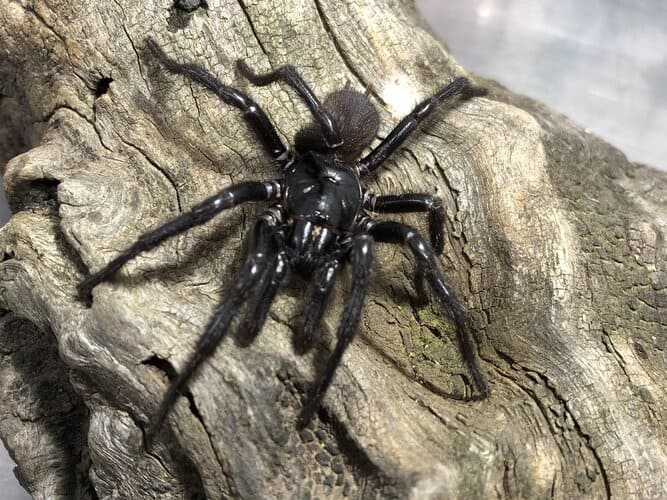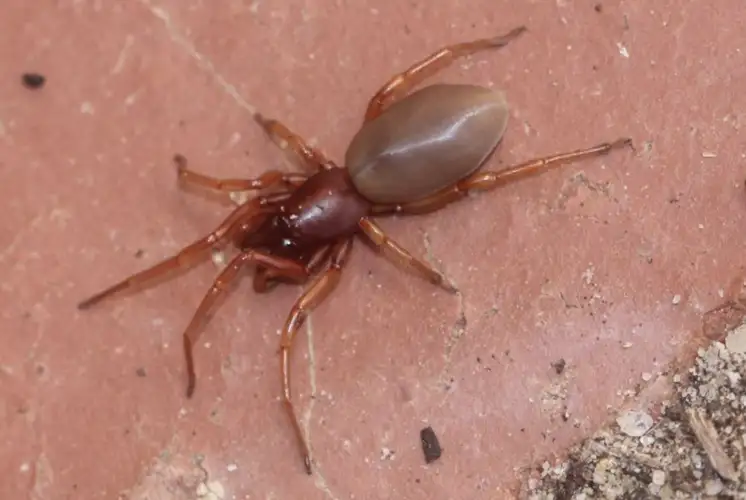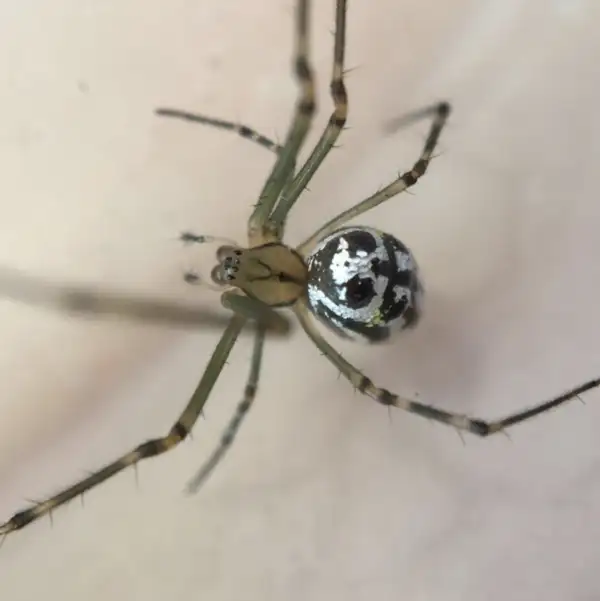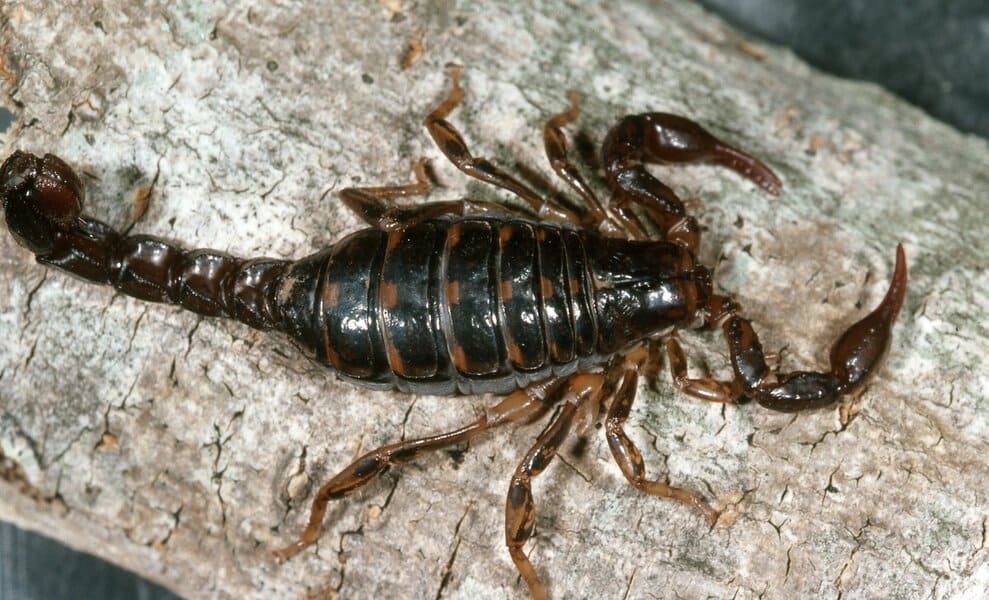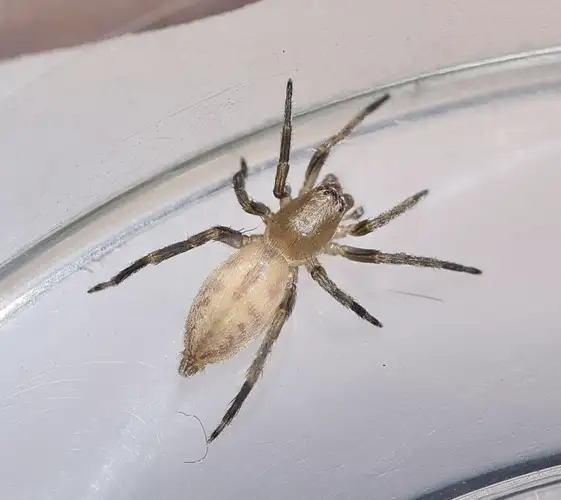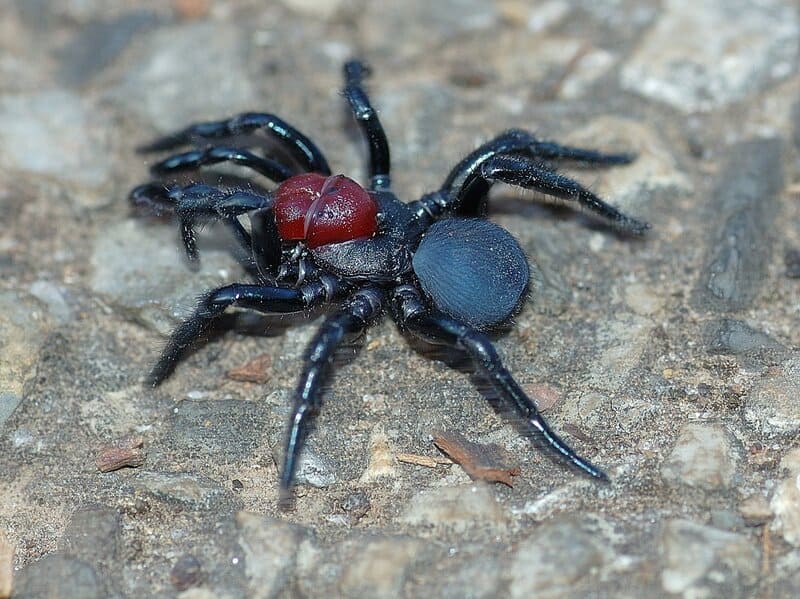Newcastle Funnel-web Spider
IUCN
Not evaluatedBasic Information
Scientific classification
- name:Newcastle Funnel-web Spider
- Scientific Name:Atrax christenseni
- Outline:Arthropoda
- Family:Atracidae Atrax
Vital signs
- length:Adult males with leg span up to about 9.2 cm; body length several centimetres; females more robust but less often seen above ground
- Weight:Not precisely known; estimated to be a few grams for large adults, varying with sex and individual size
- lifetime:Probably similar to other Atrax: long-lived females (around 10–20 years) and shorter-lived males after maturity
Feature
Very large and highly venomous Australian funnel-web spider restricted to the Newcastle region; medically significant but treatable with funnel-web antivenom.
Distribution and Habitat
Cool, moist, silk-lined burrows under rocks, logs and leaf litter in forested and suburban areas within a small region around Newcastle, New South Wales.
Appearance
Large, dark, glossy spider with high carapace, powerful jaws and long fangs; males more slender and wandering, females stockier and mostly burrow-bound.
Details
The Newcastle funnel-web spider (Atrax christenseni), nicknamed“Big Boy”, is a recently described species of Australian funnel-web spider in the familyAtracidae. Formally named in 2025, it is currently known only from a small area around the city of Newcastle in New South Wales and is regarded as one of the largest and most venomous funnel-web spiders.
Basic Biology
Scientific name: Atrax christenseni
Common names: Newcastle funnel‑web spider, Newcastle Big Boy
Taxonomy: Class Arachnida → Order Araneae → Infraorder Mygalomorphae → Family Atracidae → Genus Atrax
Size: Adult males can reach a leg span of about 9.2 cm, with a body length of several centimetres; females are even more robust but less frequently encountered wandering on the surface.
Longevity: Not yet studied in detail, but likely similar to other Atrax species, with females living many years (often 10–20 years) and males surviving only months to a few years after maturity.
Appearance
Newcastle funnel-web spiders are large, dark and glossy spiders with a powerful, heavy build:
A dark brown to blue-black carapace and legs with a polished sheen;
A high, steep caput and extremely strong chelicerae with long fangs capable of piercing fingernails;
A more subdued, greyish abdomen and sturdy overall body proportions;
Males somewhat more elongated and prone to wandering; females bulkier and usually confined to the burrow.
Distribution & Habitat
Current research indicates that Atrax christenseni is restricted to a small region surrounding Newcastlein northern New South Wales, with records clustered within roughly a 25 km radius of the city. Because of both conservation and safety concerns, exact localities are not published.
Like the Sydney funnel-web, it favours cool, moist, sheltered microhabitats, including:
Burrows under rocks, logs and leaf litter in forest or gully environments;
Damp soil banks, tree-root zones and mossy ground;
Edges of suburban gardens, drainage lines and other shaded, humid sites.
Burrows & Behaviour
Newcastle funnel-web spiders construct silk-lined burrows in the ground, often with a funnel-like arrangement of silk trip-lines around the entrance that transmit vibrations from passing prey. During the day they remain hidden in the burrow to avoid heat and desiccation.
On warm, humid nights—particularly in the funnel-web season from late spring to autumn—adult males leave their burrows andwander in search of females. This surface activity is when people are most likely to encounter the species in yards, paths or other outdoor areas near suitable habitat.
Diet & Ecological Role
Newcastle funnel-web spiders are sit-and-wait predators that feed on:
Ground-dwelling insects such as beetles, cockroaches and crickets;
Other arthropods that contact their silk lines;
They play the role of high-ranking small predators in their local ecosystems, helping regulate populations of invertebrates, while themselves being prey for birds, small mammals and reptiles.
Venom & Medical Significance
Atrax christenseni produces a highly potent neurotoxic venom similar to that of the Sydney funnel-web (A. robustus). The venom contains peptides (such as delta-hexatoxins) that interfere with sodium channels in the human nervous system and can cause:
Intense local pain and swelling;
Profuse sweating, nausea and vomiting;
Muscle twitching, elevated heart rate and blood pressure, and in severe cases respiratory distress.
Laboratory work suggests that the venom of the Newcastle funnel-web may be even more potent than that of the classic Sydney funnel-web. However, since the introduction of funnel-web antivenom in 1981, there have been no recorded deaths from Australian funnel-web spider bites, and the same antivenom appears effective against A. christensenienvenomation.
Human Encounters & Precautions
In the Newcastle region, people are most likely to see wandering males on warm, wet nights. Because of its medical importance, any suspected encounter with a large dark funnel-web spider should be taken seriously. Recommended precautions include:
Wearing gloves when gardening, lifting rocks or moving timber;
Avoiding putting hands into holes, crevices or dense leaf litter where spiders may be sheltering;
Using a jar and stiff card, or long-handled tools, to contain spiders safely if collection is required for antivenom programs.
Any suspected bite should be treated as a medical emergency. In Australia, standard funnel-web first-aid (pressure immobilisation bandage and prompt transport to hospital) and antivenom therapy, when indicated, are highly effective.
References
Isbister, G, Gray, M, Balit, C, Raven, R, Stokes, B, Porges, K, Tankel, A, Turner, E, White, J, and Fisher, M. 2005. Funnel-web spider bite: a systematic review of recorded clinical cases. Medical Journal of Australia 182(8): 407-411.
Gray, M. 2010. A revision of the Australian funnel-web spiders (Hexathelidae: Atracinae). Records of the Australian Museum 62: 285-392.
Loria, S.F., Frank, SC., Dupérré, N. et al. The world’s most venomous spider is a species complex: systematics of the Sydney funnel-web spider (Atracidae: Atrax robustus). BMC Ecol Evo 25, 7 (2025). https://doi.org/10.1186/s12862-024-02332-0
Crossman S, Li O. Surface Hydrology Polygons (National). Geoscience Australia, Canberra. 2015. https://pid.geoscience.gov.au/dataset/ga/83135
FAQ
Q1. How dangerous is the Newcastle funnel-web spider?
It is regarded as one of the most dangerous spiders for humans, with very potent neurotoxic venom. Nevertheless, in the era of
effective antivenom, fatalities are extremely unlikely if prompt medical treatment is obtained.
Q2. How is it different from the Sydney funnel-web spider?
Both belong to the genus Atrax and have similar venom, but Atrax christenseni is generally larger, has some
distinct morphological features and is confined to a small region around Newcastle rather than the broader Sydney basin.
Q3. Is there a specific antivenom for this species?
No separate antivenom is required; the existing Sydney funnel-web spider antivenom has been shown to work against bites fromA. christenseni as well.
Q4. What should I do if I think I’ve been bitten by a funnel-web spider?
Apply a pressure immobilisation bandage to the affected limb if recommended in your region, keep the person calm and as still as
possible, and seek urgent medical help. If it is safe to do so, capturing the spider for identification can assist clinicians,
but never risk further bites.

